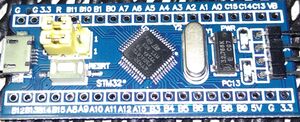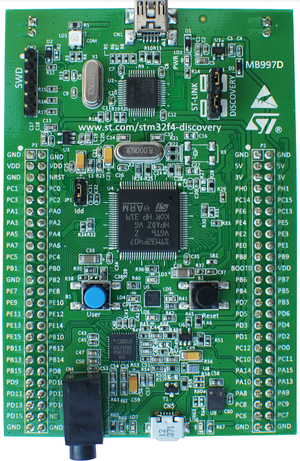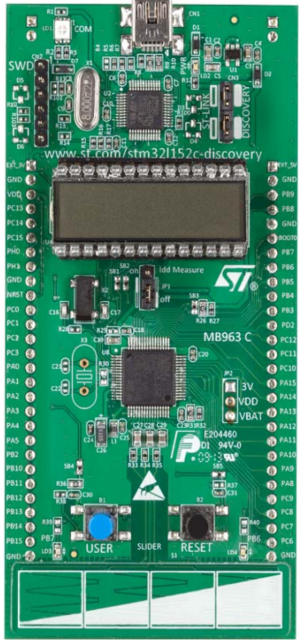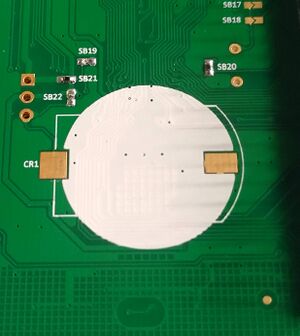Useless STM32 Development Boards
As a learning and prototyping tool, Development Boards are absolutely essential. Unfortunately a lot of those around are of incredible poor quality and this page is an attempt to point out some of the worst offenders.
You should avoid these boards completely - they will make your life harder and waste your time.
Rant Video
Blue Pill
The so-called Blue Pill boards are often used "beginners" boards and they are incredible cheap (sub $2). Unfortunately they are almost always built around clone STM32 MCUs.
ST Discovery Boards
ST's own so-called Discovery boards are in a league of their own when it comes to idiotic and lazy design. Development boards are obviously loss leaders and as such probably do not deserve the attention they deserve. However, while being loss-leaders the availability of development boards for beginners are most likely (along with the availability of reasonable development tool chains) a huge part of the reason behind ST's success. It is therefor quite baffling that so little effort is being put into them.
Just to prove a point let us go through some of the most insane design decisions in the next couple of sections.
STM32F407G-DISC1
The STM32F407G-DISC1 board is at first glance a quite good board. It could have been brilliant. The board is built around a STM32F407 MCU and it contains a ST-Link/V2-1 device which support Serial Debugging as well as SWO.
On the surface this all look quite promising. That is - until one read through the User Guide and come across this:
So, to summarise, in order to actually use a feature which is quite essential on a development board, one will have to solder two thin wires directly on two MCU pins and connect them to two pins on the header, - hopefully without creating any shorts while doing so.
These board a quite big, so there is absolutely zero reason why ST didn't create a couple of traces on the PCB itself, - except of course poor design skills or no proper review.
STM32L152C-DISC
While the STM32F407G-DISC1 would appear quite bad, it is nothing compared with the STM32L152C-DISC boards.
On the surface this board appears quite attractive. It contains a reasonably precise way of measuring current consumption (and displaying them on the LCD display). It contains a physical button, a couple of LEDs and four touch buttons. Unfortunately it also contains some truly baffling design decisions.
Missing Crystal (HSE)
To safe a few cents (seriously - 8 MHz through-hole crystals are < $0.08 in small quantities), ST decided not to populate the HSE crystal (High-Speed External) on this board. Very well, those crystals are readily available and easy to solder. BUT, they also left out the two capacitors and they included 2 0603 footprints for that Soldering 0603 capacitors is possible but it is quite a challenge compared with a through-hole crystal. Those capacitors are less than 1/10th of 1 cent, so whey they left those out is truly baffling.
Unpopulated Coin-cell holder
On the flip-side of the board there's an unpopulated footprint for a coin-cell holder.
While it is perhaps understandable that ST decided not to mount it by default, the choice of footprint is quite bizarre:
- The part listed in the User Guide is not available - or no longer available.
- The part is a SMD part with the pads under the part making it almost impossible to solder with a regular iron.
NO Debugging Options
As described on the ST-Link page, the earlier versions of ST-Link/V2 only supported SWD (Single-Wire-Debug) and SWO (Serial-Wire Output) but not a emulated Serial Port.




